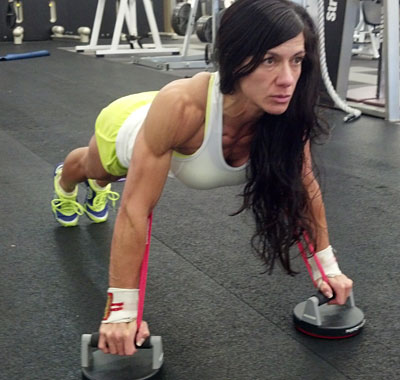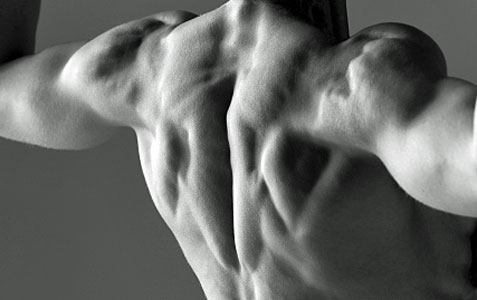Exercises you haven’t done but probably should, Part Two

Ask anyone who’s been in the iron game that’s had any type of success and they’ll tell you, “stick to the basics and don’t try and reinvent the wheel.” I couldn’t agree more from a coach/competitor stand point. However, one needs to throw a wrench in their workouts in order to prevent or break through plateaus. Variation is a universal principle that, when applied correctly, can yield incredible results.
One of the most obvious and easiest ways to add variation is to incorporate different exercises into one’s program. Following the first installment in the series, here’s another list of recommended exercises that I’ve rarely seen used.
Band push-ups
Even though training with bands has been around for a while, and used successfully in conjunction with strength training and power lifting, most people who weight train have never been exposed to, let alone used, this outstanding tool.
The laws of physics dictate the specific characteristics of strength curves while performing exercises. The force of movement is more or less dependent on the joint angle during an exercise. For example, in the barbell squat, you may be able to quarter squat 500 pounds, but can only full squat, ass to the floor, 300 pounds. Another common example is the exercise I’m highlighting today: the band push-up. The force at the top of the movement is much greater than the force at the bottom.

In a nutshell, bands work by applying more resistance where you’re strong and less where you’re weak. Bands accommodate that natural strength curve; this type of training is referred to as accommodating resistance. Researchers addressed strength curves in training as early as 1900 by putting a cam on selectorized machines. The cam on these machines is what accommodates the ability to apply force according to the strength curve. Nautilus equipment is a prime example of this type of equipment.
You can follow us on Twitter and Facebook for content updates. Also, sign up for our email list for weekly updates and check us out on Google+ as well.












